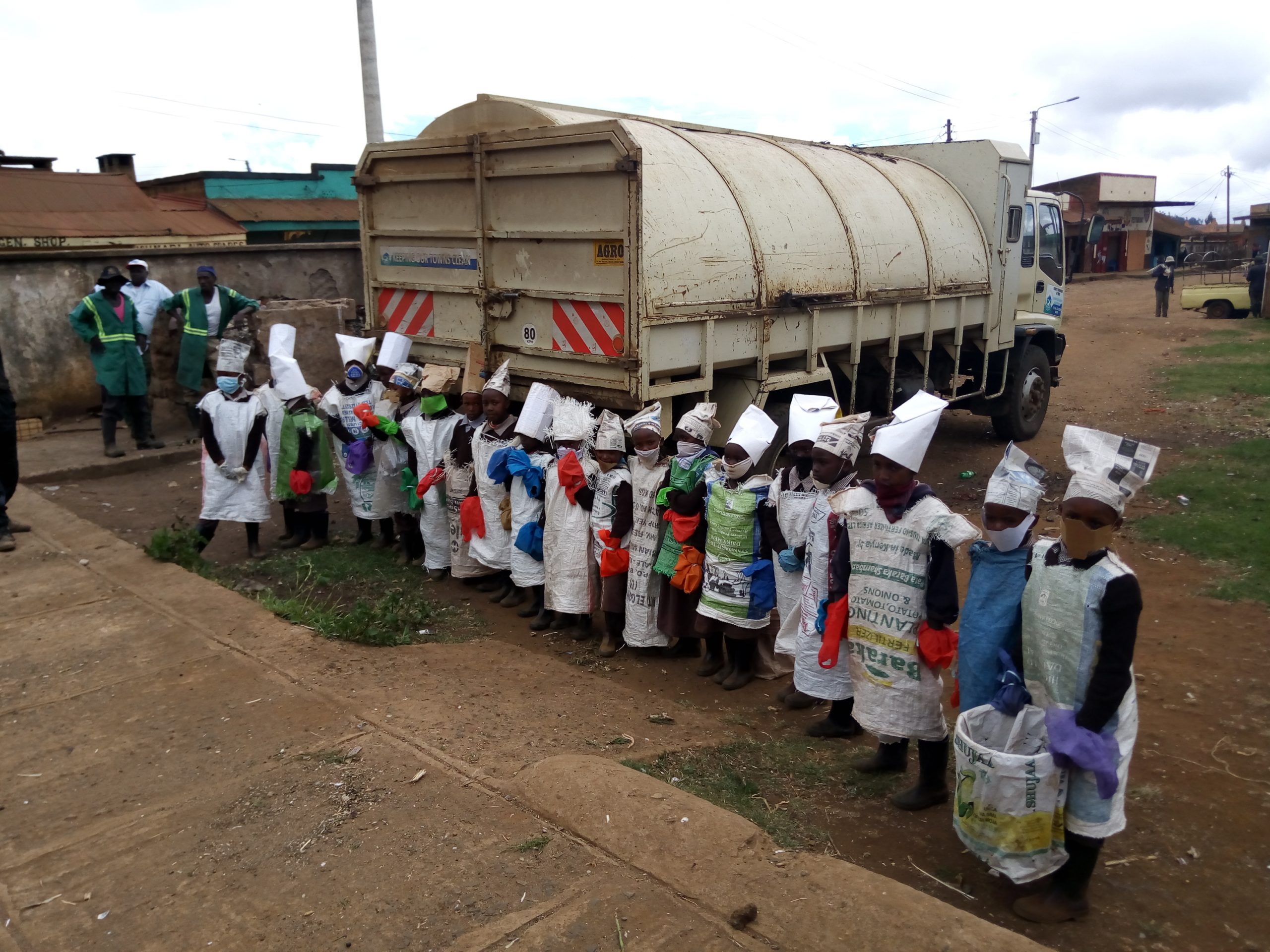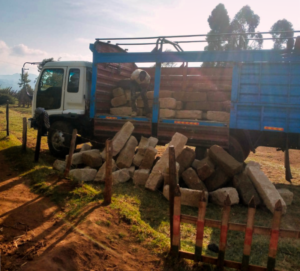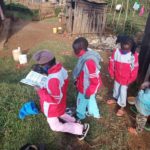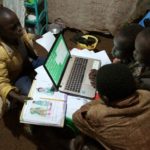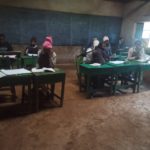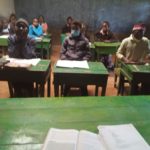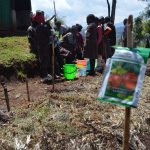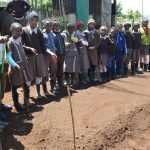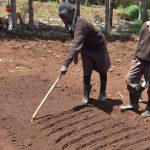Living things
Flowering plants and non-flowering
Plants that can produce flowers 💐 Plants that do not produce flowers
- ———— 1. ————————
- ———— 2.————————
- ————- 3. —————-
- ————- 4. ……………………
Plants can be grouped into two
-Flowering plants
-Non-Flowering Plants
Flowering plants produce flowers. Non-flowering plants do not produce flowers.
ACTIVITY
You will need a digital camera and a phone or a tablet.
Use digital device you have to take photos of flowering plants and non-flowering plants.
| Flowering plants | Non-Flowering plants |
We can find both flowering and non-flowering plants in our locality, some examples of flowering plants are maize, mango, avocado, bean, blackjack, and watermelon. List them above the table. Safety Precaution when handling harmful plants.
Learning
Plants can harm us in different ways. For example:
- Some plants can prick us with their thorns.
- Other plants are poisonous and they can make us sick if we eat or taste them.
- Other plants produce fluids that can damage our eyes and skin.
- Some other plants can cause irritation of the skin when we touch them without gloves.
Outline ways you can do to protect ourselves from harmful plants
ACTIVITY;
You will need gloves, an overcoat, a nose mask, gumboots, and secateurs or panga.
- Go to school garden, live fence or flower garden
- Guided by the teacher wear the safety clothing
- Let the person demonstrate how to safely trim the plants.
- Learn to wear the safety clothing when handling plants.
These are ways of protecting ourselves from harmful plants
- . These prevents our hands from being pricked by thorny plants.
- . These prevents harmful fluids from entering our eyes.
- . This prevents our skin from coming into contact with plants that cause irritation. It also protects our clothes from stains,
- . These protect our legs and feet from being pricked by thorns found in some plants.
Importance flowering plants
- To make our environment beautiful
- Important for bees which make honey
- Flowers are source of food for animals like deer. Nectar from some flowers is also source of food to some birds.
- Fruits, produced from flowers, are a source of food for human beings and other animals.
- Plants keep the air clean. They add oxygen in the air for human beings and animals to breath.
Can you think of how our environment look like if there were no flowering plants?
Home task
Peter, a grade five learner, wrote the poem below. Listen to it at https://oxford.co.ke/index.php/poemonplants
Fungi
Lets talk about these; have you ever left a slice of bread for many days? Did you notice some growths on the bread? What do we call these growths?

| This Photo by Unknown Author is licensed under CC BY-SA |

| This Photo by Unknown Author is licensed under CC BY |
The pictures shows some organisms that belong to a group called fungi. Organisms in this group are different from plants and animals.
Organism-anything that is living.
Identify fungi in our local area

| This Photo mushby Unknown Author is licensed under CC BY-SA |

Draw fungi in your exercise book, find more images of fungi.
Moulds, yeasts, puffballs, and mushrooms are examples of fungi. Toadstool is an example poisonous fungi.
Importance of fungi to human beings
- – yeast is added to dough in bread making. This produces a gas that makes the dough to rise and swell.
- . Some farmers grows mushrooms. They sell mushrooms to earn living. Edible mushrooms are rich in proteins and vitamins.
- Manufacture of medicine. Some fungi are used to make medicine. For example, fungus called penicillium is used to make pencillin.
- Improving soil fertility. Fungi like mushrooms that grows on dead matter speed up the rate of decomposition. When dead matter decompose, it forms humus, which improves soil fertility.
- Some fungi grow on stems and roots of some plants. Such fungi helps the plants roots to absorb water and mineral salts from the soil.
Decompose-to rot or decay.
Dough- a thick mixture of flour and water used for baking bread.
Edible-safe to be eaten.
Fungi cause three different types of human illness: poisonings, parasitic infections, and allergies. Many poisonous mushrooms are eaten by mistake because they look like edible mushrooms. Parasitic yeasts cause candidiasis, ringworm, and athlete’s foot. Mold allergies are very common.
Safety precautions when handling fungi
- Wear gloves. these prevent our hands from touching poisonous fungi.
- Wear a mask to cover the nose and the mouth. This prevents us from breathing in spores from fungi.
- Do not eat bread or any food that has moulds. It can make you sick.
- Do not smell food with moulds. You can breathe in spores that can cause diseases of the breathing system.
- Wash your hands with soap and water after handling fungi.
Spores- very small units that fungi use for reproduction. They are easily carried in air.
How to protect foods from moulds
- Always keep cooked food well covered.
- Store grains like maize in a cool dry.
- Ensure there is free circulation of air in the food store.
- Store fruits and vegetables in an open air container.
- Always keep the refrigerator clean and dry.
- Do not leave foods that easily go bad outside the refrigerator for more than two hours.
- Do not store cooked food for many days.
Safety precautions when handling and interacting with animals
- Wear shoes or boots when working in grass to avoid snake snakebites. Avoid walking or playing in long grass. Do not disturb a snake when you see it. Instead, quietly inform an adult.
- Never get too close to cows, bulls or donkeys. They can hit or kick you. Never play with ram. It can knock you down.
- Avoid playing near or swimming in water where crocodile 🐊 are found.
- Do not play with dogs. They can bite you and infect you with diseases.
- Wear hand gloves when touching any animal. Also, wash your hands with water and soap after touching the animals.
- Report any injury caused by an animal. Seek medical attention immediately.
| Mammals | Birds | Fish | Reptiles | Amphibians |
| Cow Goats Sheep Kangaroo Bats, whale,man | Kite, chicken, dove, duck, eagle, hawk | Tilapia, trout, shark, nile perch, | Lizard, crocodile, snakes, chameleon | Frog, toad, newt, salamander |
Major characteristics of different groups of vertebrates
Characteristics of mammals
- Their bodies are covered with hair and fur.
- Female mammals have mammary glands. These produce milk for the young ones.
- Their body temperature does not vary with that of the environment.
- They breathe using the lungs.
Mammal gives birth to young ones. However, the duck-billed platypus and the spiny ant-eater lay eggs.
There are some mammals that live in the sea. These are called sea mammals. Examples include dolphin 🐬, the whale 🐳 and the seal.
The bat is a flying mammal.
Characteristics of birds
- All birds lay eggs.
- Their bodies are covered with feathers.
- Birds have beaks instead of a mouth.
- Their body temperature does not vary with that of the environment.
- Their feet are covered by scales.

Characteristics of fish
- They breathe through gills
- Their bodies have scales
- They reproduce by laying eggs
- They live in water throughout
- Their body temperature changes with the temperature of the environment.

Reptiles(tortoise, lizard, snake, chameleon)
Characteristics of reptiles
- Their bodies are covered with scales
- They lay eggs
- They breathe through lungs
- Their body temperature changes with that of the environment.
Characteristics of amphibians
- They can live on land and also in water.
- They have moist skin that has no scales.
- They breathe through the mouth, moist skin or the lungs.
- Their body temperature changes with that of the environment

| This Photo by Unknown Author is licensed under CC BY-NC |
Make a portfolio of all vertebrates, on categories of mammals, birds, reptiles, amphibians, fishes

